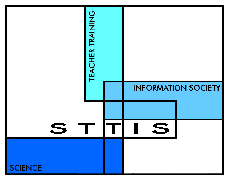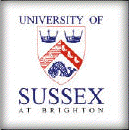Guide
|
Notes
on Sections C, D, E and F Transformations of curriculum
innovations
The main aims of these
sections are:
-
To compare different ways
in which teachers may transform
the use of computer simulations and models.
-
To explore factors that
may influence the transformations.
-
To consider these issues
in the light of their own
teaching experience.
The stories in these sections
bring out key ideas
in the research findings. The issues have been drawn from the findings
of the STTIS project as a whole, but have been adapted where
appropriate
to the context of computer modelling and simulation. Notes on the
activities
follow:
Each of them illustrates a
different kind of relationship
between the use of computer modelling or simulation and scientific
knowledge.
The first three stories are about teachers who see computer modelling
as
potentially providing more effective ways of doing the kinds of things
they are already doing. Simulations are seen as something that can
provide
a useful resource for consolidation of knowledge (Story A), as an
alternative
to practical work (Story B) or as a way of supporting students in using
practical ideas to test predictions (Story C). However, computer
modelling
can be seen as providing new possibilities in learning about scientific
modelling itself (Story D), or as teaching about skills that may be
useful
outside the context of science (Story E).
Two common issues which arise
when considering the
use of computers, not just for modelling but for any educational
purpose,
are the possible benefits of increased motivation (Story A) and the
potential
difficulties raised by lack of technical competence (Story B).
Particular
benefits related to the use of simulations in science is that they may
make theoretical ideas more memorable through visualisation (Story C)
and
that they allow pupils to become intellectually engaged in theoretical
thinking (Story D). Motivation is often thought of as making something
‘enjoyable’ (Story A) though this does not happen simply by using a
computer
(Story D); motivation is a complex issue related to the content of what
is being learned, teaching styles, the previous experiences and
aspirations
of the learners and so on. Some teachers believe that working with
computers
allows learners to take more responsibility for their learning, by
creating
their own models (Story E) and through a more active engagement with
the
task (Story F).
One issue here is how teachers
see the nature of
science itself and its consequences for learning. Computer modelling
may
bring gains but may have drawbacks depending on how a teacher perceives
what it is to learn science. The issues raised in these stories are
concerned
with the importance of experiencing phenomena first-hand (Story A),
understanding
of science as a body of concepts and theory (Story B), experiencing
what
is like to ‘do’ science, understanding about the process of
constructing
scientific knowledge (Story D) and providing a context for learning
‘transferable’
skills (Story E).
These stories bring out some
of the important constraints
that need to be considered when implementing an innovation. The first
three
stories are about time constraints; teachers often report that
computers
do not in fact save time (Story A), while others think that there are
gains,
but only in the longer term (Story B). One of the factors which is
particularly
important in its impact on time is the technical demand made by the
software
and the competence of the pupils in using it (Story C).
The next three
stories are about the physical
constraints imposed by the availability of resources. How resources are
used can have a major impact on the way that computer modelling is
integrated
into the teaching and on the style of learning. Computers may be used
in
small group work during the course of others activities (Story D) or
for
independent work in a whole class setting (Story E). Activities may be
less effective than they could be because of the resource constraints
(Story
F).
The final set of
three stories are about teachers’
own competence and confidence, and their attitudes towards this. Some
teachers
feel that it is particularly important to retain control when using
computers
(Story G) and some find that the use of computers have made them become
more open in their style of teaching (Story H). Though some teachers
are
worried that pupils will know more about computers, others see that
what
is important is the teacher’s expertise in science (Story I).
|

 Teaching with computer models
Teaching with computer models

